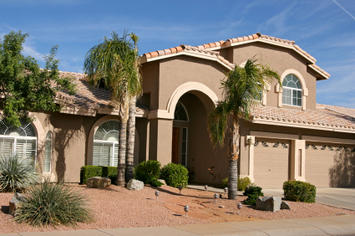
Phoenix may be one of the nation’s most misunderstood urban areas. The conventional wisdom is that Phoenix is one of the most suburbanized (or if the pejorative is preferred, “sprawling”) urban areas in the United States. Not so. According to 2000 U.S. Census data, Phoenix ranked number 10 in population density out of the 36 urban areas with more than one million in population.
At this point it is appropriate to define terms. An urban area is an urban footprint, the area that would be outlined in lights from an airplane at night. Urban areas are also called urbanized areas or urban agglomerations. Urban areas do not include any rural territory --- they are the continuously built up or developed territory. Urban areas are considerably different from metropolitan areas, a difference often missed by journalists and others. Metropolitan areas are labor markets, are defined using county or town (in the six New England states) boundaries and always include rural areas and more distant exurbs.
The Phoenix urban area had a population density of 3,683 per square mile, with 2,907,000 residents living in 799 square miles. What may be even more surprising is that only one Eastern urban area --- New York --- was more dense and only one Midwestern urban area was more dense --- Chicago. In the South, only the Miami urban was more dense than the Phoenix urban area. On the other hand, in the highly automobile-oriented newer West, six urban areas were more dense than Phoenix. Portland, despite local and international marketing efforts to portray that area as the ultimate example of urbanization, was not one of them. In 2000, Phoenix was nearly 10 percent more dense than Portland. As is shown below, this gap may have widened since 2000.
All of that does not change the fact that Phoenix and its suburbs seem to stretch on forever. That is the nature of large urban areas. What makes Phoenix one of the nation’s most compact urban areas is that its population density declines from the center to the urban fringes at a much lower rate; the outer rings tend to be not much less dense than the inner city.
This contrast can be best seen in comparison to the Boston urban area, widely perceived as one of the nation’s most dense urban areas. Nothing could be further from the truth. Central Boston, including such municipalities as Boston, Cambridge, and Somerville clearly fit this description and rank among the highest density areas in the United States outside the four highly urbanized boroughs of New York City. The densest part of the Boston urban area (in land area) has a population density of 28,000 --- more than double that of Phoenix (nearly 14,000) and even more in comparison to Portland (12,000).
But there is much more to an urban area than the urban core. The big difference is in the suburbs. Most Boston suburbs developed as low-density communities. Land restrictions, often imposed at the town and village level, are far tighter than in similarly sprawled part of the greater Boston area. Indeed, beyond the dense core and the inner suburbs, the sprawl is so extensive that the Boston urban area covers more land area than the Los Angeles urban area, which has nearly three times as much population. The outer suburbs of Boston also are slightly less compact than the outer suburbs of Atlanta --- the world’s lowest density large urban area.
Overall, the Phoenix urban area has a density that is more than 50 percent higher than that of Boston’s. A comparison of the population density profiles of the Phoenix, Portland and Boston urban areas illustrates these differences, with higher densities in Phoenix and Portland than in earlier developing, but much more suburban Boston.
The key to the higher density of the Phoenix urban area (and other higher density urban areas of the West, such as Los Angeles, San Francisco, San Jose, Riverside-San Bernardino, Las Vegas and Denver) has to do with the greater power of the market in newer cities. In Boston, Washington, Philadelphia and a number of other Eastern and Midwestern urban areas, suburban land use regulations required large lot zoning creating far larger urban footprints than would have occurred otherwise.
In the Phoenix urban area, comparatively dense development continues all the way to the urban fringe --- and that densification seems to be accelerating. The U.S. Bureau of the Census American Community Survey indicates that the density of the Phoenix urban area (within its 2000 definition) rose 11 percent between 2000 and 2006. This is more than double the rate of densification nationwide. Only Riverside-San Bernardino, Atlanta, Houston and Las Vegas densified at a greater rate. Further, based upon the new data, the Phoenix urban area --- John McCain’s political base --- is now more dense than Senator Barack Obama’s Chicago region.
Resources:
Comparison of Atlanta and Boston urban areas
Wendell Cox is principal of Demographia, an international public policy firm located in the St. Louis metropolitan area. He has served as a visiting professor at the Conservatoire National des Arts et Metiers in Paris since 2002. His principal interests are economics, poverty alleviation, demographics, urban policy and transport. He is co-author of the annual Demographia International Housing Affordability Survey.












